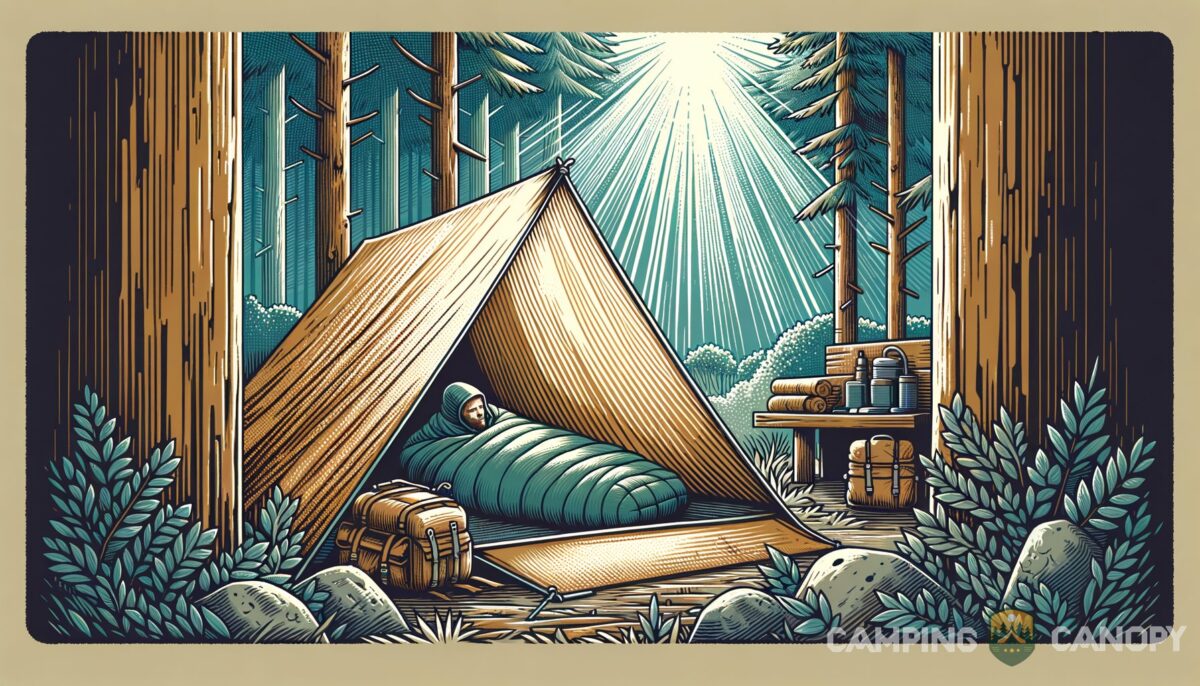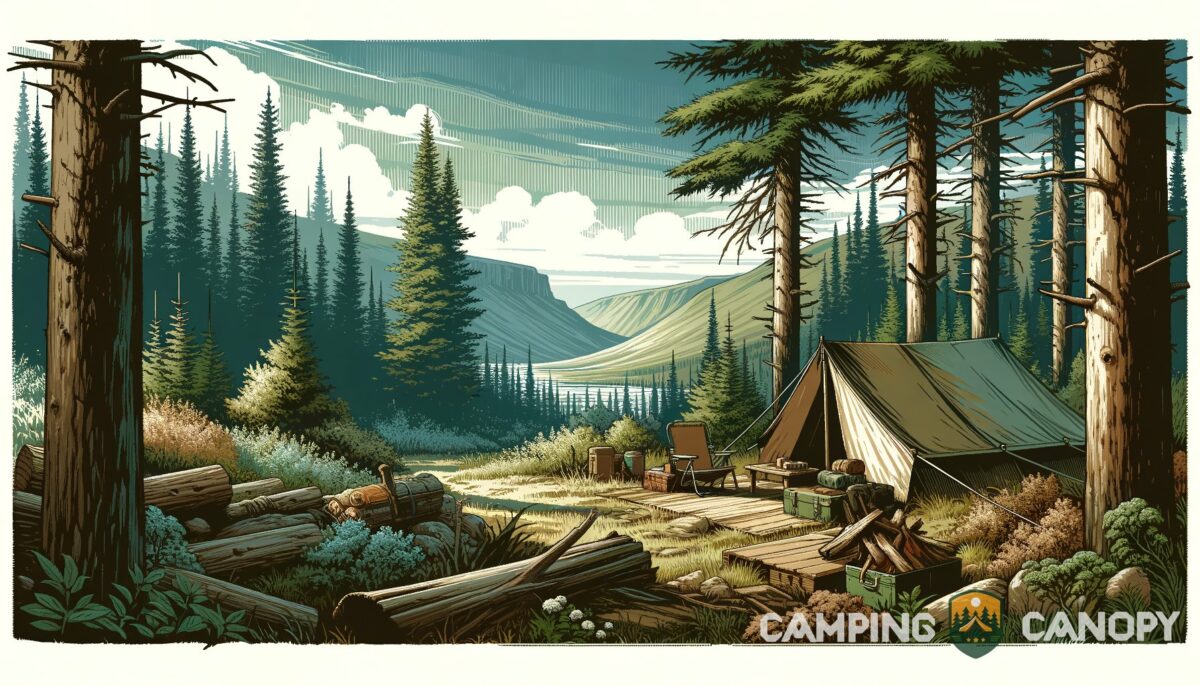After spending countless nights under the stars in everything from heavy-duty tents to minimalist shelters, I’ve come to appreciate the unique qualities of the bivy sack. In this post, you’ll learn about the bivy sack, a humble yet transformative piece of gear for the ultralight adventurer, and why it might just be the game-changer for your next outdoor expedition.
Key takeaways
- Bivy sack essentials: A bivy sack is a minimalist shelter that offers an intimate, unmediated experience with the natural world, prioritizing simplicity and compactness.
- Types and choices: There are various types of bivy sacks, from basic designs for ultralight trips to hooped styles for a bit more comfort. Your choice depends on your adventure objectives and comfort needs.
- Challenges and rewards: While bivy sack camping poses challenges like condensation and limited space, it rewards with unmatched closeness to nature, minimal weight, and the joy of simplicity.
- Personal experience: Embracing the bivy sack lifestyle fosters a deeper connection with the outdoors, challenging us to reconsider our needs and enjoy the purity of minimalist adventures.
What is a bivy sack?
A bivy sack, short for bivouac sack, is essentially a waterproof cover for your sleeping bag, designed to offer minimalistic shelter from the elements. Unlike traditional camping setups, the bivy sack is prized for its simplicity and compactness, making it an ideal choice for those looking to reduce their pack weight and simplify their camping experience.

Born from the needs of climbers who required an emergency shelter that could be easily carried on multi-day ascents, bivy sacks have evolved into a specialized piece of gear admired by ultralight backpackers, climbers, and bikepackers alike.
- Minimalist Design: A step up from cowboy camping, a bivy sack is just larger than your sleeping bag and pad, typically constructed from waterproof or water-resistant materials to protect against wind and precipitation.
- Types and Styles: From the basic and ultralight, like the MSR Pro Bivy, to more feature-rich models with internal poles and full-length zippers for a tent-like experience, bivy sacks cater to a range of preferences and needs.
Modern bivy sacks are no longer just emergency shelters but have developed into a deliberate choice for adventurers who prioritize speed, efficiency, and a connection with their surroundings. By shedding non-essential features, a bivy sack allows you to embrace the essence of fast and light travel, whether you’re scaling a peak or traversing a long-distance trail.
Tip: Choosing the right bivy sack
Consider the type of adventure you’re embarking on and the conditions you expect to face. While a basic bivy sack might suffice for a quick overnight trip in good weather, a hooped design could be more suitable for longer trips or variable weather conditions.
In the realm of outdoor adventures, the choice of shelter can significantly influence the experience. Among various options, the bivy sack stands out for its simplicity, weight efficiency, and the unique closeness it offers to the natural world.
Unlike traditional tents, bivy sacks offer a more intimate outdoor sleeping experience, usually preferred by solo adventurers, climbers, and ultra-light backpackers for its simplicity and direct connection with nature.
The evolution of the bivy sack
Initially developed as emergency shelters for climbers and military personnel, bivy sacks have evolved from mere survival gear to a deliberate choice for many outdoor enthusiasts. The earliest versions were simplistic, barely more than waterproof bags.
However, modern advancements have introduced variations in design and functionality, ranging from ultra-simple covers to more tent-like structures with poles and zippers. This variety ensures that there’s a bivy sack suitable for different preferences and conditions.
Types of bivy sacks
Bivy sacks can be broadly classified into two categories based on their design and intended use:
- Basic Bivy Sacks: These are the lightest and most straightforward designs, prioritizing weight savings and packability. They are ideal for emergency use or for adventurers who are willing to trade comfort for minimalism.
- Hooped Bivy Sacks: A bit heavier than their basic counterparts, these bivy sacks include a hoop structure over the head area, increasing the space inside and improving comfort without significantly compromising on weight.
Both types offer distinct advantages depending on the user’s priorities, be it total immersion in nature or a balance between minimalism and comfort.
Why choose a bivy sack over a tent?
The decision between a bivy sack and a tent is not merely about shelter but about how you wish to experience the outdoors. Here are some reasons adventurers might prefer a bivy sack:
- Less Weight and Packability: The most significant advantage of bivy sacks is their minimal weight. For example, MSR’s Pro Bivy weighs just 283g (10-oz), making it an inconspicuous addition to a backpack.
- Flexibility in Camping Sites: Bivy sacks require much less space than tents, allowing campers to sleep in unique locations where pitching a tent is not feasible.
- Increased Warmth: Bivy sacks can offer a slight increase in warmth by trapping a thin layer of air around the sleeper, beneficial in cooler conditions.
Despite these advantages, it’s crucial to consider that bivy sacks can be less comfortable than tents, offering limited space to move around and potentially leading to a feeling of claustrophobia for some.
Considerations when using a bivy sack
- Weather Conditions: Bivy sacks perform best in dry conditions; prolonged rain or snow can compromise comfort.
- Condensation: The waterproof materials used in bivy sacks can lead to condensation buildup inside, dampening your sleeping gear.
- Space and Comfort: The confined space of a bivy sack may not be suitable for those who prefer more room to move or have a significant amount of gear.
These factors underscore the importance of matching the shelter type to the specific needs and preferences of your adventure.
| Type | Weight | Best for |
|---|---|---|
| Basic Bivy Sack | 5-10 oz. | Emergency use, minimalist trips |
| Hooped Bivy Sack | 1-1.5 lbs. | Comfort-conscious solo trips |
Frequently asked questions (FAQ)
To reduce condensation, look for bivy sacks with breathable materials and ventilation features. Also, try to air it out as much as possible during your trip.
While bivy sacks are typically designed for solo use, there are larger models available that can accommodate two people. However, keep in mind that the experience will be much more intimate compared to a tent.
Focus on finding a bivy sack that features lightweight, water-resistant materials but also includes a hoop or small pole to elevate the fabric above your face, balancing minimal weight with a bit more comfort.
Yes, though versatile, bivy sacks tend to excel in specific seasons based on their construction. For all-season use, look for one with robust weather protection and enough space to layer sleeping gear for warmth.
While bivy sacks can be used in bear country, it’s crucial to follow all standard bear safety protocols, including proper food storage and awareness of your surroundings.
After each trip, fully dry your bivy sack before storing. For cleaning, use mild soap and a soft brush to gently clean the fabric, then hang it to dry away from direct sunlight.
Final thoughts
As we conclude this deep dive into the world of bivy sack camping, it becomes evident that this minimalist approach to outdoor sleeping is about much more than just sleeping under the stars. It’s a philosophy, a deliberate choice to immerse oneself fully in the natural environment with as little barrier as possible.
Whether you’re an ultralight backpacker, a solo adventurer, or a seasoned mountaineer, a bivy sack offers a unique, unfiltered connection with the wild. Remember, the right shelter can transform your outdoor experience, so consider what you want out of your adventures and whether a bivy sack could be the key to unlocking those desires.















